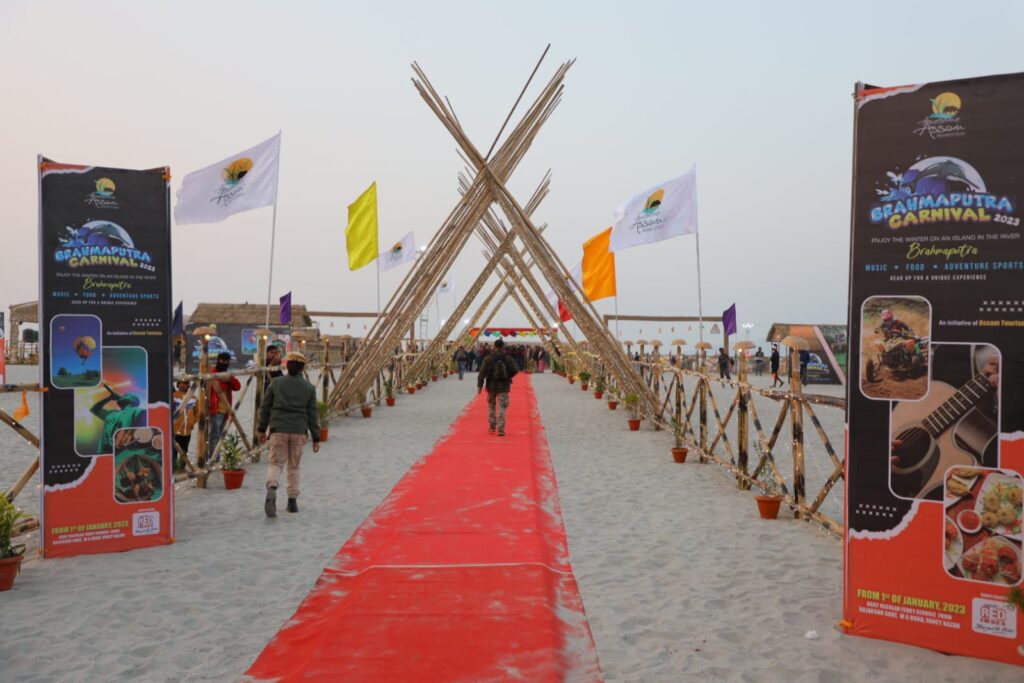In recent years, the concept of “Vocal for Local” has gained significant traction across India, emphasizing the promotion and consumption of locally produced goods and services. This movement holds particular significance in a diverse and culturally rich state like Assam, where traditional craftsmanship, indigenous industries, and unique cultural heritage are deeply intertwined with its economic fabric.
Cultural Riches and Traditional Industries
Assam, nestled in the northeastern part of India, boasts a vibrant cultural tapestry woven from its various ethnic communities such as the Assamese, Bodo, Mising, Karbi, and many others. Each community contributes distinct traditional arts, crafts, and practices that are not only aesthetically rich but also economically significant.
Handloom and textile industries are prime examples of Assam’s rich cultural heritage and economic potential. The state is renowned for its exquisite silk fabrics, notably Muga silk (golden silk), Eri silk, and Pat silk. These silks are not just fabrics but embodiments of generations-old craftsmanship and artisanal skills passed down through families and communities. By promoting these indigenous textiles under the “Vocal for Local” initiative, Assam can preserve its cultural heritage while providing sustainable livelihoods to local weavers and artisans.
Agriculture and Horticulture: Natural Bounty of Assam
Assam’s agricultural sector is another cornerstone of its economy, with tea being its most famous export. The state is one of the largest producers of tea in India, renowned for its strong and aromatic Assam tea. By encouraging local consumption of Assam tea and other agricultural products like organic fruits, vegetables, and spices, the “Vocal for Local” campaign can bolster rural economies and ensure fair prices for farmers.
Moreover, Assam’s rich biodiversity supports a variety of horticultural products such as oranges, pineapples, and exotic herbs. These products not only contribute to the local economy but also have the potential to capture niche markets nationally and internationally, further strengthening Assam’s position as an agricultural powerhouse.
Handicrafts and Artisanal Products
Handicrafts occupy a special place in Assam’s cultural heritage, with each community excelling in distinct art forms such as bamboo and cane craft, pottery, wood carving, and traditional jewelry making. The intricate designs and craftsmanship of these products are unparalleled, reflecting the artistic prowess and creativity of Assamese artisans.
Under the “Vocal for Local” initiative, promoting these handicrafts can generate employment opportunities in rural areas and empower local artisans, especially women and marginalized communities. By preserving and celebrating these traditional art forms, Assam not only enhances its cultural identity but also creates a sustainable economic ecosystem rooted in local creativity and innovation.
Challenges and Opportunities
Despite the rich cultural and economic potential, Assam faces several challenges in fully realizing the “Vocal for Local” vision. Infrastructure gaps, limited access to markets, and the need for skill development among artisans are some hurdles that need addressing. Government initiatives and private sector partnerships are crucial in overcoming these challenges and creating an enabling environment for local industries to thrive.
Furthermore, promoting sustainable practices in agriculture and industry will be essential to safeguard Assam’s natural resources and biodiversity. Initiatives promoting eco-friendly practices and certifications can enhance the marketability of local products both domestically and internationally.
Conclusion: A Bright Future Ahead
In conclusion, embracing “Vocal for Local” in Assam is not merely an economic strategy but a celebration of its rich cultural heritage and diverse communities. By promoting and consuming locally produced goods and services, Assam can foster inclusive growth, empower its artisans and farmers, and preserve its unique identity in a globalized world.
The journey towards a vibrant local economy will require concerted efforts from all stakeholders – government, businesses, civil society, and consumers. Through collective action and a renewed appreciation for local traditions and craftsmanship, Assam can chart a path towards sustainable development and prosperity while ensuring that its cultural legacy continues to flourish for generations to come.





